Table of content
Char siu, or Chinese barbecued pork, is a culinary icon celebrated worldwide for its sweet, savory, and smoky flavor profile. Glazed with a sticky-sweet marinade and caramelized to perfection, this dish is a staple in Cantonese cuisine and a beloved addition to noodles, rice bowls, and even steamed buns. While it may seem like a recipe best left to professional chefs or bustling Chinese restaurants, crafting authentic char siu at home is entirely achievable with the right ingredients, techniques, and a dash of patience. This comprehensive guide will walk you through every step of the process, from selecting the perfect cut of pork to achieving that coveted lacquered finish.
The Essence of Char Siu: Flavor and History
Char siu’s roots trace back to China’s Guangdong province, where it was traditionally cooked over open fires in street-side barbecue pits. The name itself, char siu, translates to “fork roast,” referencing the method of skewering marinated meat on long forks and roasting it slowly over charcoal. Modern adaptations often use ovens or grills, but the essence remains the same: tender, juicy pork infused with a harmonious blend of sweetness, umami, and a hint of smokiness.
The magic of char siu lies in its marinade—a balanced mixture of soy sauce, honey, hoisin sauce, and aromatic spices like Chinese five-spice powder. This marinade not only imparts flavor but also acts as a brine, tenderizing the meat while creating a glossy, caramelized crust during roasting. Whether served as a centerpiece dish, sliced thinly over rice, or stuffed into fluffy bao buns, char siu is a testament to the power of simple ingredients elevated by meticulous preparation.
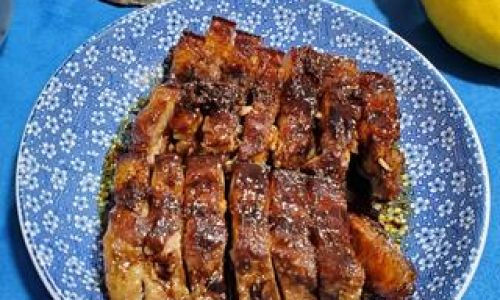
Ingredients: Building the Flavor Foundation
To recreate authentic char siu, gather the following ingredients. Each component plays a crucial role in achieving the dish’s signature taste and texture:
- Pork: Opt for pork shoulder (also called pork butt) or pork belly. Both cuts offer a ideal fat-to-meat ratio, ensuring juiciness and tenderness. Pork shoulder is leaner, while pork belly provides richer, melt-in-your-mouth fat.
- Marinade Base:
- Soy Sauce: Provides saltiness and umami. Use dark soy sauce for a deeper color.
- Hoisin Sauce: A fermented soybean paste that adds sweetness and complexity.
- Honey or Maltose: Honey offers accessibility, while maltose (a traditional Chinese sweetener) yields a glossier finish.
- Rice Wine or Shaoxing Wine: Adds depth and mellows the meatiness.
- Aromatics:
- Garlic and Ginger: Freshly minced for a pungent kick.
- Chinese Five-Spice Powder: A blend of star anise, cinnamon, fennel, cloves, and Szechuan peppercorns.
- Sweeteners:
- Brown Sugar: Enhances caramelization and adds molasses-like notes.
- Red Fermented Tofu (Optional): For a deeper, funkier flavor (common in regional variations).
- Coloring Agent:
- Red Food Coloring (Optional): Traditional recipes sometimes use a touch for vibrancy, though it’s not essential.
Equipment: Tools for Success
- Oven or Grill: An oven with a broiler function is ideal for even cooking and caramelization.
- Baking Tray and Rack: Elevate the pork on a wire rack to ensure air circulation and prevent sogginess.
- Meat Thermometer: Essential for achieving the perfect internal temperature (145°F/63°C for pork).
- Mixing Bowls and Whisk: For combining the marinade.
- Pastry Brush: For basting the pork during roasting.
Step-by-Step Preparation
Selecting and Preparing the Pork
- Cut Selection: Ask your butcher for a 2-pound (900g) piece of pork shoulder or belly. If using shoulder, trim excess fat but leave a thin layer to keep the meat moist.
- Scoring: Lightly score the fat side in a diamond pattern. This allows the marinade to penetrate and promotes even cooking.
Crafting the Marinade
In a large bowl, combine:
- ¼ cup dark soy sauce
- ¼ cup hoisin sauce
- 3 tbsp honey (or maltose)
- 2 tbsp Shaoxing wine
- 2 tbsp brown sugar
- 1 tbsp Chinese five-spice powder
- 1 tbsp minced garlic
- 1 tbsp minced ginger
- 1 tsp red food coloring (if using)
- 2 tbsp neutral oil (e.g., vegetable or canola)
Whisk until the sugar dissolves and the mixture is smooth.
Marinating the Pork
- Place the pork in a resealable plastic bag or a shallow dish. Pour the marinade over the meat, ensuring it’s fully coated.
- Seal the bag or cover the dish and refrigerate for at least 4 hours, or ideally overnight. For even flavor distribution, flip the pork halfway through.
Roasting the Pork
- Preheat the Oven: Set to 375°F (190°C). Line a baking tray with foil and place a wire rack on top.
- Drain the Marinade: Reserve ¼ cup of the marinade for basting.
- Roast: Transfer the pork to the wire rack, fat-side up. Roast for 30 minutes.
- Baste: Every 10 minutes, brush the pork with the reserved marinade. This builds the glaze and prevents drying.
Caramelizing Under the Broiler
- After 30 minutes, increase the oven temperature to 450°F (232°C) or activate the broiler.
- Broil the pork for 5–7 minutes, watching closely to avoid burning. The goal is a deep amber crust with slight charring.
- Check for Doneness: Insert a meat thermometer into the thickest part. It should read 145°F (63°C).
Resting and Slicing
- Let the pork rest for 10 minutes before slicing. This redistributes juices and ensures tenderness.
- Slice against the grain into thin, bite-sized pieces.
Tips for Perfect Char Siu
- Marinade Consistency: If using honey, warm it slightly to blend seamlessly with the marinade.
- Oven Temperature: Use a fan-assisted oven if available for even heat distribution.
- Basting Frequency: Baste generously but avoid overhandling the meat to prevent tearing.
- Resting Time: Never skip resting—it’s the secret to juicy pork.
Serving Suggestions
- Char Siu Rice Bowls: Serve over steamed jasmine rice with blanched bok choy and a fried egg.
- Bao Buns: Stuff sliced char siu into pillowy steamed buns with pickled vegetables and hoisin sauce.
- Noodle Soup: Add to a fragrant broth with wheat noodles and greens.
- Lettuce Wraps: Wrap slices in crisp lettuce leaves with herbs and a drizzle of chili oil.
Variations and Customizations
- Spicy Char Siu: Add 1–2 tsp of chili paste or Szechuan peppercorns to the marinade.
- Honey-Free Version: Substitute honey with maple syrup or agave for a different sweetness profile.
- Vegan Adaptation: Use seitan or tofu marinated in the same sauce, then grilled or baked.
Troubleshooting Common Issues
- Soggy Crust: Ensure the pork is elevated on a rack during roasting to allow air circulation.
- Burnt Edges: Reduce broiling time or lower the oven rack position.
- Bland Flavor: Marinate for at least 8 hours, and ensure the pork is fully coated during roasting.
The Science Behind the Glaze
The caramelization process, known as the Maillard reaction, occurs when the sugars in the marinade interact with the meat’s proteins under high heat. This reaction creates hundreds of new flavor compounds, resulting in the complex, smoky-sweet taste synonymous with char siu. The fat from the pork belly or shoulder also renders during cooking, basting the meat from within and contributing to its tender texture.
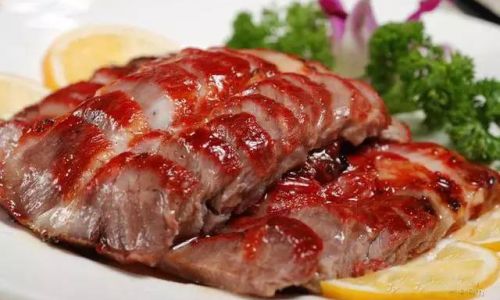
Preserving Leftovers
Char siu keeps well in the refrigerator for up to 4 days. To reheat, wrap slices in foil and warm in a 300°F (150°C) oven for 10 minutes. Alternatively, chop leftovers and stir-fry with vegetables for a quick fried rice.
Conclusion: The Joy of Homemade Char Siu
Crafting char siu at home is a labor of love that rewards you with a dish rivaling any restaurant version. The process—from meticulously scoring the pork to patiently basting and broiling—is as much an art as it is a culinary technique. Whether you’re a seasoned home cook or a curious novice, this recipe invites you to explore the flavors of Cantonese cuisine and savor the satisfaction of creating a timeless classic. So fire up your oven, gather your ingredients, and embark on a journey to master the art of char siu—your taste buds (and dinner guests) will thank you.
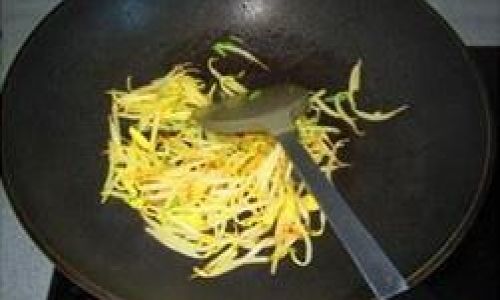
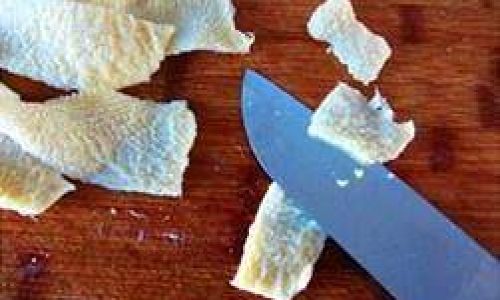


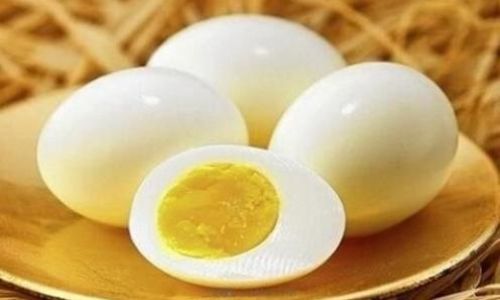
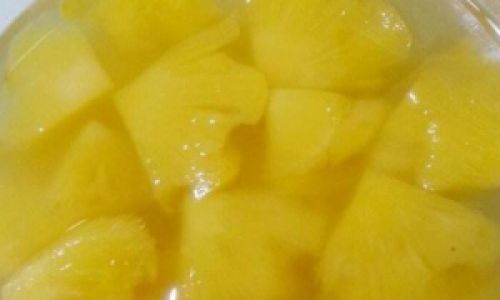
0 comments